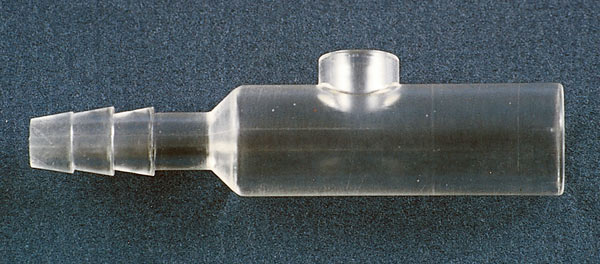
The CARE Course

Critical Procedure - Meconium aspiration
Completion requirements
Back to Critical Procedures - Index page
Home
For all procedures, ask yourself, 'does this need to be done 'now vs later'? And should this be done by 'me vs someone else?' Very often the answers will be 'now' and 'me' - so read on!
Meconium aspiration
Description
How to suction meconium from the trachea of a neonate.
**Do not delay resuscitation to do this - start resuscitating and only use suction if the airway is obstructed or there is failure of oxygenation**
Indications
Airway obstruction from meconium (or suspected),
Contraindications
There are no absolute contraindications to this procedure.
Equipment
 ET tube
ET tube- Suction
- Meconium aspirator
Attach wall suction tubing to the narrow end. The wide end connects to the ET tube connector. Apply suction for ≤ 5 seconds by occluding the side hole.
Procedure
For a baby born with meconium present:
Do not suction the baby on the perineum - this was removed in the 2010 guidelines.
If the baby is non-vigorous
If the baby is non-vigorous
Commence resuscitation as per usual approach - suction meconium only if there are signs that it is causing airway obstruction or failure of ventilation.
To suction meconium:
- attach a meconium aspirator to the suction tubing
- use direct laryngoscopy
- intubate the trachea
- apply suction by attaching the meconium aspirator to the ET tube and occluding the side hole of the meconium aspirator
- withdraw the ET tube, continuing suction as you do this
- suction for ≤ than 5 seconds
- (you may have the integrated ET tube/suction devices instead of the separate meconium aspirator piece)
- if no meconium is retrieved, do not repeat intubation and suction
- if meconium is retrieved and no bradycardia is present, re-intubate and suction if you think there is a significant amount of meconium still present in the trachea
- if bradycardia is present, administer positive pressure ventilation and follow the NRP resuscitation algorithm, and consider suctioning again later
If the baby is vigorous (defined as normal respiratory effort, normal muscle tone, and heart rate >100 beats/min)
- do not electively intubate
- clear secretions and meconium from the mouth and nose with a bulb syringe or a large-bore suction catheter
- observe but manage as a normal birth
Potential pitfalls
Delay in commencing 'normal' resuscitation in a non-vigorous baby because of the presence of meconium - remember - commence resuscitation as per normal and deal with meconium if it is a source of airway obstruction or there is failure to oxygenate.Delay in intubation and suctioning.
"Plan B"
If bradycardia is present after the first suctioning administer positive pressure ventilation and consider re-suctioning later.Back to Critical Procedures - Index page
Home
Last modified: Thursday, 19 May 2022, 3:16 PM